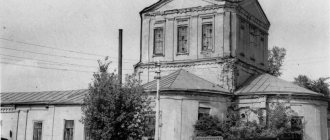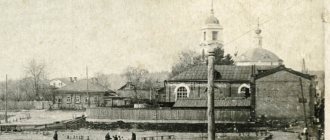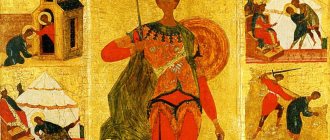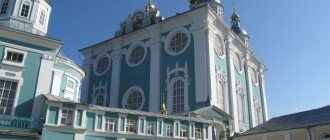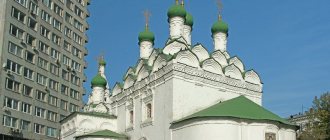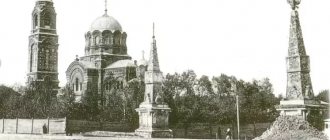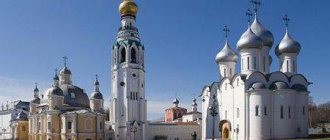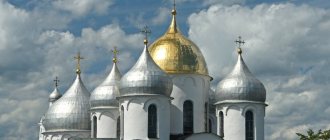Moscow is an interesting city, large and cozy. Moscow is not geography, it is vivid emotions, a mosaic of the past and the modern, a series of golden-domed cathedrals, cozy courtyards and urban high-tech. But her soul is the old temples. One of them - the Church of Clement Pope - is the hero of our story.
Temple of the Hieromartyr Clement: the schism of two churches
The uniqueness of this cathedral as a Moscow landmark is due to the fact that it bears the name of a Catholic saint, and yet two Christian churches - the Roman Catholic and the Greek Orthodox - have been in schism since 1054. The leaders of these churches in the 11th century declared mutual anathemas against each other, and they have not been lifted for almost ten centuries. To say that relationships are difficult is to say nothing.
And suddenly, in Zamoskvorechye, where there are many interesting buildings that make up the sights of Moscow, next to the Orthodox churches there rises the Church of Clement, consecrated in the name of one of the anathematized Primates of the Roman Throne. And the temple is not Catholic, but Orthodox, subordinate to the Moscow Patriarchate, and even in the most conservative merchant part of old Moscow near Pyatnitskaya Street in Klimentov Lane.
[smartcontrol_youtube_shortcode key=”Church of Pope Clement” cnt=”2" col=”2" shls=”false”]
However, there is nothing unusual in this, since Saint Clement, according to legend, lived in the 1st century, i.e. before the schism of the churches, he was baptized by the Apostle Paul, became the bishop of Rome and, like all Christians, was persecuted. For this he was canonized. And so Pope Clement became an important person in Moscow!
Let me build a temple!
[ads[ads-pc-1]the first mention of the temple dates back to 1612. This is the year of the end of the Time of Troubles - the civil war in Russia at the beginning of the 17th century, complicated by the invasion of Polish and Swedish troops. The temple is mentioned in connection with the actions of the militia of K. Minin and D. Pozharsky to expel the invaders from Moscow, when at Klimentovsky’s “fortress” (a small fortress - translated into modern language) there were battles between the militia and the detachments of Hetman Khotkevich. But this prison was most likely made of wood. Only in 1652, under Tsar Alexei Mikhailovich, when Russia gradually regained its former strength, a stone cathedral was erected on this site.
Temple under the Soviets
During Soviet times, in 1929, it was closed as a religious building. They wanted to blow it up, but it was saved by Grabar, who considered this church to be outside the Moscow circle and endowed with “features of high-style St. Petersburg architecture.” But the Clement Cathedral in Moscow was very lucky. It was given not as a vegetable storehouse, like the Cathedral of the Savior on Spilled Blood in St. Petersburg, and not as a prison, like the St. Euthymius Monastery in Suzdal, but as a storage facility for the collections of the Lenin Library in Moscow (now it is the RSL, the Russian State Library). There was no looting of the church or destruction of the frescoes. But still, the building gradually deteriorated and fell into complete disrepair.
In 2008, the Clement Cathedral was returned to the church, and for several years now it has been an active church, in which restoration work is simultaneously underway. Outwardly, he has already seriously changed.
Story
The creation of this magnificent church is associated with the ascension to the Russian throne of Empress Elizabeth I, which coincided with the feast day of St. Clement. Since in those days (as well as today) it was customary to consecrate churches in honor of the most important state or church events, two new churches were founded in Moscow at the behest of Elizabeth I. One of them, Klimentovskaya, was built on the site of an old wooden church that had stood here since the beginning of the 17th century.
After construction was completed, the church became very popular among Moscow nobles. It managed to maintain such a high status until the revolution of 1917. First, the Bolsheviks imposed exorbitant taxes on the temple, and in 1935 they closed it completely. For several years the temple stood idle until it was transferred to the management of the city library: the archive was placed here.
The library collection, stored in the church premises, numbered about 1.5 million copies. Most of it is monastic collections confiscated during the years of militant atheism.
After the collapse of the USSR, the temple received the status of an architectural monument of federal significance and in 2008 became the property of the Russian Orthodox Church.
Is this a church? No, it's a palace!
It is unknown who the architect of the Church of the Holy Martyr Clement the Pope is. It is believed that the project was developed by Pietro Antonio Trezzini himself, and the construction of the building was supervised by I.Ya. Yakovlev.
Reference:
This is a huge five-domed temple, built in the style of the so-called Rastrelli or Elizabethan Baroque, very similar to a palace. The facade of the building is divided into floors, richly decorated with double columns, and decorated with decorative grilles.
There are always a lot of tourists here, since Zamoskvorechye is a unique historical Moscow district. The main altar of the temple is consecrated in honor of the Transfiguration of the Lord. The temple is prayed for, loved not only for its amazing ceremonial beauty, but also for its homely coziness, intimacy and true Moscow charm!
When visiting Moscow churches, do not forget about the rules established by the Russian Orthodox Church: formal clothing and a headscarf are mandatory for women.
"A city to remember." 651. St. Clement's Church
May 8, 2021 Photo project “City in Memory”. 651. St. Clement Church and Golikovsky Lane
The temple in the name of the Hieromartyr Clement, Pope of Rome, was built on Pyatnitskaya Street by 1769 at the expense of the merchant Kozma Matveev. The five-domed temple in the Baroque style delighted and continues to delight residents and guests of Zamoskvorechye, but the name of the creator of the masterpiece has not been preserved in history: presumably, it was built by Ivan Yakovlev according to the design of Pietro Antonio Trezzini or Alexei Evlashev.
The wooden Clement Church is indicated on Godunov's drawing - a plan of Moscow in 1597. In those days, in Zamoskvorechye there was a Streltsy settlement, an outpost of the city’s defense during the Time of Troubles. In 1612, the “battle of Klimentovsky prison” took place here, which is considered the beginning of the expulsion of Polish-Lithuanian invaders from Moscow. According to eyewitnesses, the retreating Cossacks saw Lithuanian banners above the church and, in order to prevent desecration of the shrine, launched an attack and knocked out the enemy garrison.
The first stone church on this site dates back to 1657; the main volume of the building was overgrown with extensions over time, a refectory and a bell tower were added to it. And in 1762, parishioners received permission to demolish the dilapidated church and build a new one, which has survived to this day. Streletskaya Sloboda gave way to merchant estates and “kind and God-loving investors” from the merchant class contributed to the construction and decoration of the St. Clement Church.
Look at old photos. St. Clement's Church. View from Pyatnitskaya Street. 1882: https://pastvu.com/p/935
St. Clement's Church. View from Bolshaya Ordynka. 1870-1880: https://pastvu.com/p/933731
In the inventory of church property of 1817, Fr. The 16th century icons “The Life-Giving Trinity”, “The Dormition”, “The Annunciation”, “The Intercession”, “St. Peter, Alexy, Ion, the Wonderworkers of Moscow and All Russia”, “The Holy Apostle and Evangelist Luke”, were transferred from the ancient dismantled temple. The sacristy contained banners, altar crosses, books in precious bindings, chandeliers, and candlesticks made by skilled craftsmen.
Main iconostasis. 1928-1932: https://pastvu.com/p/45120
The temple was plundered by Napoleonic soldiers, suffered from floods when the Moscow River often overflowed its banks, and the parish, despite the splendor of the architectural ensemble, remained poor. The clergy could not cope with the need to constantly maintain the unique interior decoration in splendor; divine services were held “not without danger to the health of the worshipers and the clergy.” In difficult situations, donations from philanthropists and benefits allocated for the repair of premises and restoration of icons helped out.
The architectural masterpiece was described in the guidebook “Around Moscow” in 1917: “From a distance, against the backdrop of Zamoskvorechye, and close up, the temple with its five domes makes an equally strong impression with its calm, beautiful bulk. The windows on the second floor and the finely patterned openwork iron grille running over the top of the building are very good.” In the same fatal year for the Russian Empire, the October Socialist Revolution occurred and the Bolsheviks who came to power began to destroy the signs of the autocratic past.
St. Clement's Church was closed for worship in 1929, its territory was claimed by the Bakhrushin Theater Museum, the Central Archive of the All-Russian Central Executive Committee, and the VSNKhovets housing cooperative, but the temple was protected by the status of an architectural monument. In 1934, it housed the book depository of the exchange and reserve fund of the Lenin Library. Even earlier, according to the decree of the All-Russian Central Executive Committee on the confiscation of church valuables, valuable utensils were confiscated, but the icons and fragments of decor remained in place.
In 2008, the St. Clement Church was returned to believers and restoration of the building and interior decoration began. Among the relics are ancient icons of the Hieromartyr Clement, Pope of Rome and Peter, Archbishop of Alexandria, St. Nicholas the Wonderworker, the Blessed Virgin Mary, the Exaltation of the Cross of the Lord, and “The Last Judgment.”
An exact copy of the Shroud of Turin on canvas was donated by the Archbishop of the Italian city of Turin, Cesare Noziglia.
An ancient reliquary containing the relics of saints from the first centuries of the Christian era, and the Gospel of the 18th century.
You can get acquainted with the history of St. Clement's Church and news of modern parish life on the website: https://www.klement.ru
Before the revolution, the church yard was surrounded on the south side by several buildings - an almshouse, a house for the clergy and a three-story apartment building with apartments, offices and a parochial school. The entrance pavilion of the temple was lost in 1932 during the reconstruction of Pyatnitskaya Street. The pavilion has been restored today, and the apartment building has been reconstructed into a five-story building.
Pavilion in the fence of the Church of Clement the Pope on Pyatnitskaya Street. 1927-1929: https://pastvu.com/p/1206418
Ancient churchyard fence
At the walls of the St. Clement Church, a short Golikovsky Lane begins, built up mainly with apartment buildings.
St. Clement's Church and houses in Golikovsky Lane. 1988-1989: https://pastvu.com/p/839299
Golikovsky Lane, 6 - apartment building (1912)
Golikovsky Lane, 7A - residential building (1935)
Golikovsky Lane, 7 - apartment building (1909)
Golikovsky Lane, 9 - in 1826, the owner of the plot was the nobleman Konstantin Kritsky, who ordered the construction of a wooden house with a mezzanine with windows on four sides.
The building has undergone reconstruction.
Golikovsky Lane, 10с1 - residential building (1927)
Golikovsky Lane, 11 - the main house of the Andreevs' city estate after the Napoleonic fire was rebuilt on the old foundation in the early 1820s. The subsequent owners, merchant Anna Mochalova and tradesman Alexander Kudryavtsev, reconstructed the house in order to increase the usable area, and during the Soviet period, all historical interiors, layout and decor were destroyed.
Golikovsky Lane, 13 - residential building (1923). Construction of the apartment building began in 1914, was interrupted by the outbreak of the First World War and was completed under Soviet rule.
Golikovsky Lane, 14с1 - residential building (1926, architect A. Gurdzhienko) built on the foundation of a house from 1791.
Golikovsky Lane turns 90 degrees and ends at the intersection with Pyatnitskaya Street.
Golikovsky Lane. 1961: https://pastvu.com/p/21606
Photos: Evgeny Chesnokov
All photo stories of the “City in Memory” project:
Category: Personal blogs. Tags: Orthodoxy, Moscow churches, Zamoskvorechye.
Other publications
Evgeny Chesnokov 05.13.2021 at 10:57
"A city to remember." 653. Malaya Ordynka and Theater of the Moon
On the final section of Malaya Ordynka, modern administrative buildings have replaced low-rise buildings.
Evgeny Chesnokov 05.12.2021 at 10:26
"A city to remember." 652. Malaya Ordynka merchant
For several centuries the street retained its patriarchal, old-Moscow appearance; here asphalt replaced paving stones only in the early 1960s.
Evgeny Chesnokov 05/06/2021 at 11:33
"A city to remember." 650. Tolmachevskaya Sloboda
The word “interpreter” came in the 14th century from the Turkic language and, according to Dahl’s dictionary, meant “oral, verbal translator from language to language.”
Evgeny Chesnokov 05/03/2021 at 23:58
"A city to remember." 649. Staromonetny Lane
Staromonetny Lane owes its name to the Kadashevsky Mint, founded in the times of Peter the Great during the monetary reform.
05/02/2021 at 03:40
Christ is Risen!
On May 2, Orthodox Christians celebrate the main Christian holiday - Easter, the victory of Christ over death.
Evgeny Chesnokov 04/27/2021 at 20:03
"A city to remember." 646. Bolshaya Ordynka and Marfo-Mariinskaya Convent
The Marfo-Mariinsky Monastery was founded as a convent in 1909 by Grand Duchess Elizaveta Fedorovna Romanova.
Evgeny Chesnokov 04/19/2021 at 00:25
"A city to remember." 645. Bolshaya Ordynka Orthodox
In the old days, Moscow was called golden-domed for the abundance of gilded domes of churches rising above low-rise residential buildings.
Evgeny Chesnokov 03/11/2021 at 01:04
"A city to remember." 641. Vysoko-Petrovsky Monastery
The Vysoko-Petrovsky Monastery was founded in the 14th century by Saint Peter, Metropolitan of Kyiv and All Rus', Moscow Wonderworker.
Evgeny Chesnokov 03/09/2021 at 02:35
"A city to remember." 640. Krapivensky Lane
Krapivensky Lane has been known since the beginning of the 17th century, when the Church of St. Sergius of Radonezh, which was called “in Starye Serebrenniki,” was built here.
Evgeny Chesnokov 05/02/2020 at 00:21
"A city to remember." 575. Butyrskaya street
Butyrskaya Street is a Soviet and modern residential development, an industrial zone and the ancient Church of the Nativity of the Blessed Virgin Mary with a very difficult fate.
Evgeny Chesnokov 01/27/2020 at 11:44
"A city to remember." 548. Moscow Kremlin tourist
Before the revolution, services were held in the Kremlin cathedrals, Muscovites could freely walk in the Tainitsky Garden and visit the royal palaces.
03/18/2019 at 18:33
“So every good tree bears good fruit”
The next trip as part of the “Best Sons of Muscovy” project was dedicated to the history of Russian merchants and charity.
02/25/2019 at 14:45
The Museum of Russian Icons introduces masterpieces of icon painting
Two old houses on Goncharnaya Street were restored and adapted to house a museum with several exhibition halls and workshops.
Evgeny Chesnokov 01/14/2019 at 14:55
"A city to remember." 424. Tverskaya street and Yuri Dolgoruky
The square acquired its modern appearance in 1954, when Prince Yuri Dolgoruky reigned on a high pedestal, and before the revolution there was a monument to General Mikhail Skobelev.
Evgeny Chesnokov 01/14/2019 at 02:18
"A city to remember." 423. Tverskaya street and Telegraph
The Bolsheviks came to power with their plans for developing the main Moscow street and the huge Central Telegraph grew on a vacant lot.
Evgeny Chesnokov 01/01/2019 at 04:08
"A city to remember." 420. Khodynsky Boulevard
Khodynsky Boulevard runs in a two-kilometer arc around the territory of the former Frunze Central Airfield.
